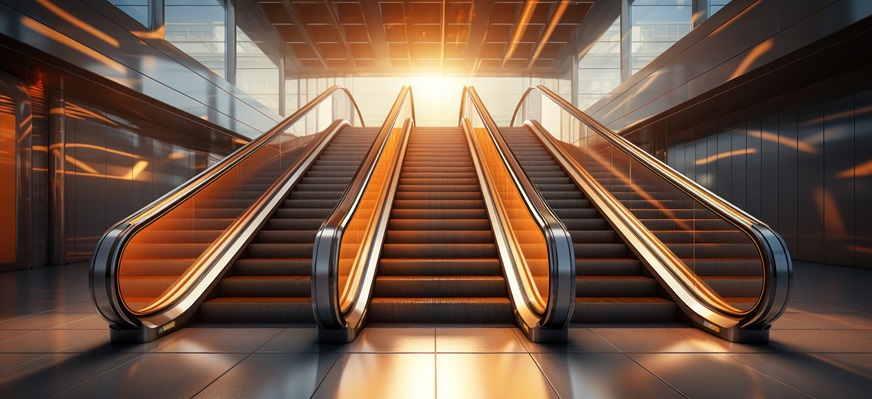
Most modern elevators are pulled from above by steel cables, though hydraulic elevators are still in use in some low-rise buildings and for some heavy-duty freight elevators. A cable-hoisted elevator travels up and down in a shaft, which has doors opening from within at each floor. Above the shaft, in a room of its own, is an electric motor with an attachment called a governor to control speed and a panel of switches and relays—called a control unit—to control stopping, starting, and reversing. The steel cables that support the cab are looped around a pulley attached to the driving motor. The greater the weight in the cab, the tighter the cables grip the pulley.
From the drive mechanism the cables drop down the depth of the elevator shaft, holding a heavy counterweight.The escalator is a moving staircase in which the steps move as a unit upward or downward at an incline of about 30 degrees. They are electrically powered, driven by chain and sprocket, and held in proper place by two tracks. The advantages of the escalator over the elevator are a greater passenger capacity (as many as 6,000 persons per hour on larger types), continuous availability, comparatively small space requirements, and lower operating cost.